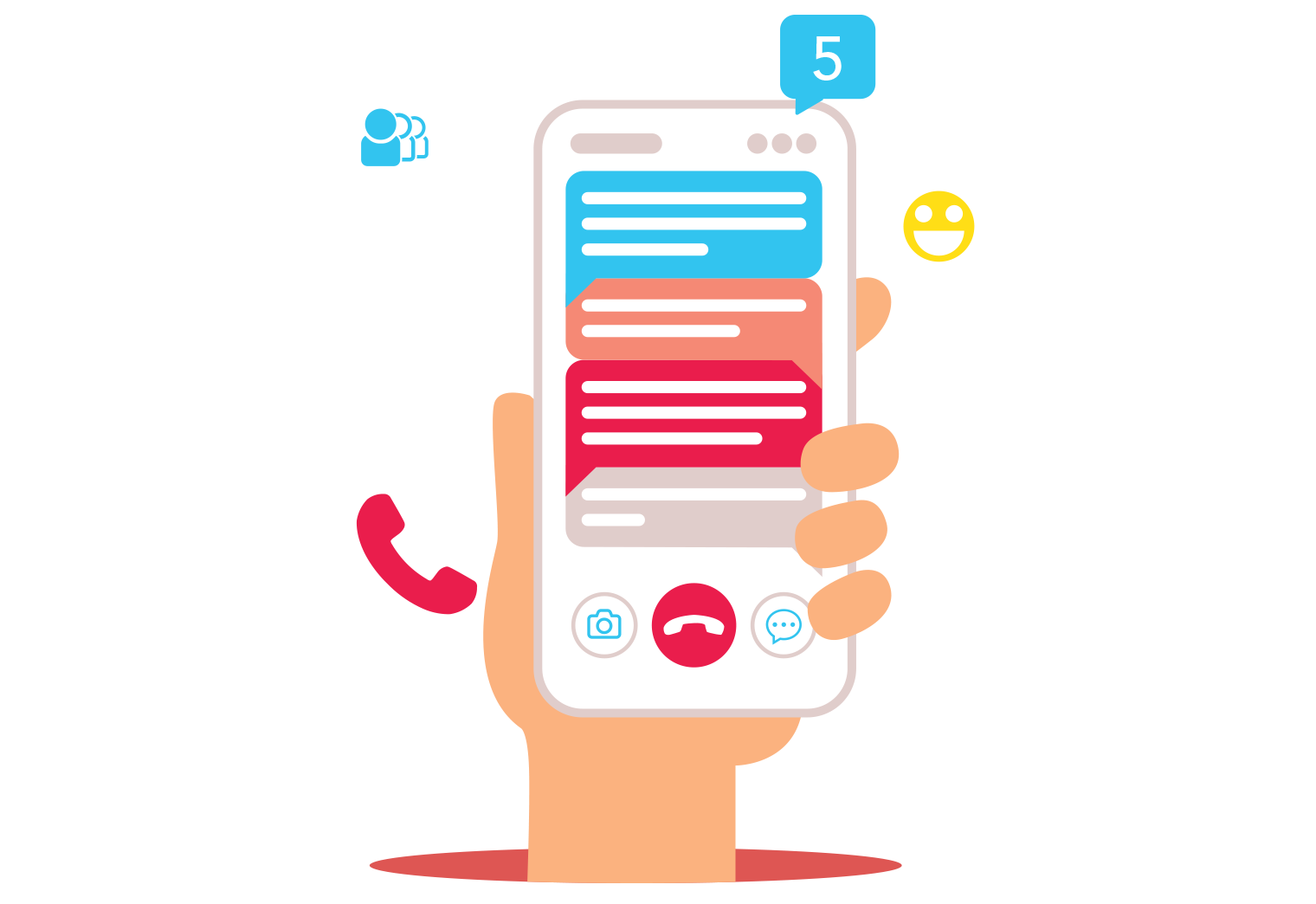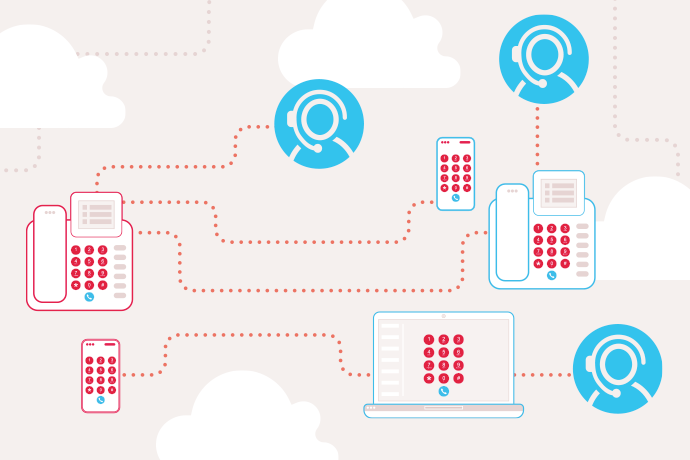Basket Total
$0.00
-
Your shopping basket is empty
Loading

Hello! Log in Your Account
New customer? Start here


|
7 min read
Contents
Quick Summary
AHT is key to improving customer satisfaction, but it is also important to strike a balance between efficiency and quality support to boost your business' potential
As you know, exceptional customer service is key to staying ahead of the competition, particularly in small and medium-sized businesses (SMBs). In fact, a whopping 96% of customers will stop using a company after a bad customer service experience (Forbes)! By optimising Average Handling Time (AHT), you can alleviate customer frustration and build stronger customer relationships, which are essential for business growth.
AHT or Average Handling Time is the average time it takes a customer service agent to resolve an inquiry. While the lowest possible AHT might seem ideal on the surface or at first glance, it shouldn’t come at the expense of customer satisfaction if a longer call time would improve resolution and experience for them. It is important to note that Average Handling Time differs from Average Hold Time (which specifically refers to the amount of time a customer is kept on hold during an interaction, as opposed to considering the different stages of issue resolution). However, Average Hold Time does contribute to the overall Average Handling Time and is an important factor contributing to customer satisfaction.
The key is finding a balance between efficiency and good solutions. Let’s take a look at how to achieve that balance and improve your call performance. It is important to remember that while contact centre features are on the rise, even a one-man business that deals with customer calls is ultimately performing as a contact centre, and therefore needs these tools to seem professional, approachable and informative.
Total Talk Time + Total Hold Time + Total After-Call Work Time / Total Number of Calls = Average Handling Time
AHT is an important metric for businesses, for a number of reasons. Not only does it correlate with customer satisfaction but also reflects the operational efficiency of a business, lead to better resource allocation and ensure that any issues can be addressed in order to provide the best possible service to callers.
Agent training - Provide your agents with comprehensive training on product, as well as supplying them with problem solving techniques and customer communication skills. Give your agents the trust and independence needed to make decisions and resolve issues on their own (within their authority) to minimise transfers and call times.
Efficient knowledge management - You will need to implement a robust knowledge base or FAQ section to provide agents with information at their fingertips, and regularly updating this is key to ensuring your customers are provided with the most accurate and relevant information and solutions.
Leverage available technologies - Use tools such as Customer Relationship Management (CRM) platforms to track customer interactions and provide your agents with a comprehensive view of each customer’s history and details, which reduces the need for customers to repeat themselves to different agents. IVRs and call routes can also help to speed up query resolution by answering simple questions automatically and routing customers to the most suitable agent right away if they need more assistance.
Monitor and adjust workflows - It is beneficial to regularly review call recordings and agent performance to identify any outstanding areas for improvement. By automating as much of the customer query process as possible, you can minimise the amount of time agents need to spend on administrative tasks. Getting agent feedback on workflows also means they feel heard and can optimise their own productivity.
Improve call routing and distribution - Using a VoIP phone system means you are provided with intelligent call routing that can direct customers automatically to the most skilled agent for their issue. This improves AHT and FCR rates. This also helps to balance call distribution to ensure one single agent isn’t overloaded, and calls can be distributed based on time since the last call, or even length of the last call, in order to not overwork your staff.
Regularly review and adjust agent goals - Setting realistic AHT targets involves considering efficiency and customer satisfaction, and not assuming a one-size-fits-all metric for every situation. It is important to review targets regularly and adjust them based on factors such as changing business needs, and customer feedback. It is also beneficial to encourage a culture of continuous improvement with your staff, and motivate agents to improve their performance without making them feel pressured to rush through tier calls, as this can have a negative effect.
While it is important for businesses to value a lower AHT, customer satisfaction should never be sacrificed for the sake of a speedy call. For example, if a customer calls in with an issue, perhaps feeling frustrated and annoyed, rather than rushing through a scripted response, the agent could spend extra time to fully understand the nature of the issue and how this has affected the customer’s business. Then, a step-by-step solution can be put in place, which may increase the call duration, but the issue will have been thoroughly resolved and the customer will feel valued. Here are some ways to ensure a balance is kept between call efficiency and quality:
Understand customer needs - Take the time to listen to your customers and really understand their needs. This may mean sometimes you will spend more time on a call, but in the long run it will result in higher customer satisfaction and fewer repeat calls for one issue.
Focus on first call resolution - Aim to resolve a customer’s issue in the first interaction. Not only does this improve customer satisfaction and less frustration for them, but will reduce follow up calls which therefore lowers AHT over time.
Encourage quality interactions - Train agents to engage with customers in a meaningful way, ensuring they feel valued and heard. Don’t just see them as a number on a ticket, but instead remember they are human, and want to benefit from your service. This can lead to clearer communication, understanding, and lead to better outcomes that reduce AHT and increase customer loyalty and trust.
While AHT is a valuable metric for understanding customer experience, it is essential for you to consider other factors that contribute to customer satisfaction. For example, a slightly longer call duration may be acceptable to a customer if it results in a valuable resolution and answers their questions with detailed information, and therefore more beneficial for your business in the long run.
Some additional metrics to consider are:
First Call Resolution (FCR) - The percentage of calls resolved on the first contact with no need for follow ups.
Customer satisfaction Score (CSAT) - Adirect measure of customer satisfaction through post-interaction surveys and questions.
Net promoter Score (NPS) - This measures the likelihood of your existing customers recommending your service to others.
Improving Average Handling Time is vital for the success of your business’ customer service strategy, which becomes increasingly important in smaller sized businesses as the customer base is smaller and bad impressions can have a lasting impact. By focusing on effective training for agents, and maintaining the balance of efficiency, connection and quality, you can lower AHT and increase customer satisfaction.
Always remember that the goal is not just to get through as many calls as possible quickly, but rather to provide a comprehensive and warm service that leaves your customer feeling valued and listened to. Aim to exceed customer expectations and always invest time in areas of the business that directly impact and involve customers.
Contact us to learn more.


As call volumes increase, a solution that automatically answers calls can prove valuable. We compare auto-attendants and virtual receptionists to find out the best option.
Posted December 22 2023 | 5 min

Find out how warm transfers can help your teams appear more engaging, what the difference is between warm and cold transfers, and how our best practice tips can boost your caller satisfaction.
Posted August 24 2023 | 7 min

Compare call route techniques and decide which one is the most appropriate solution for your teams.
Posted July 26 2022 | 5 min